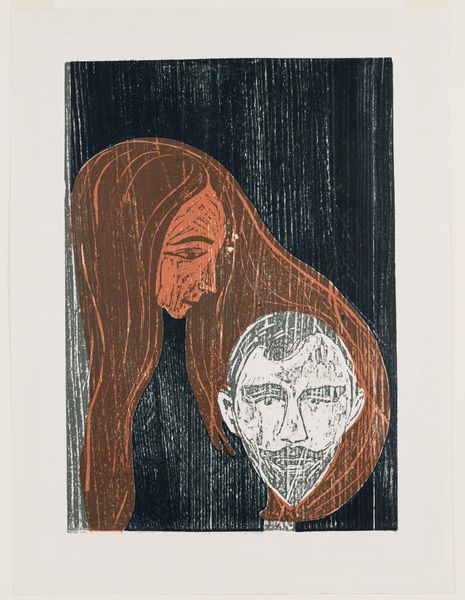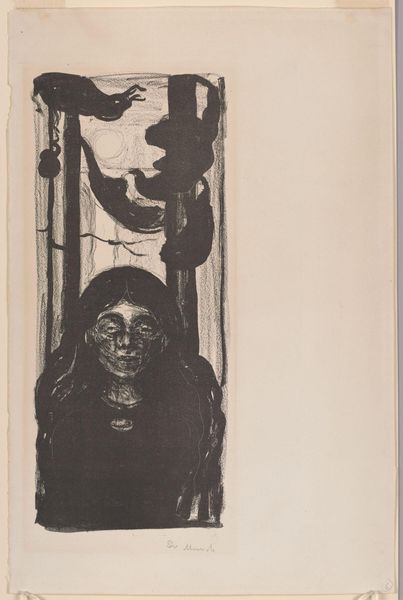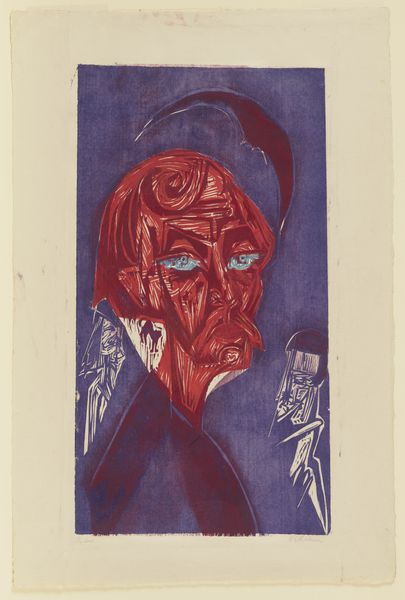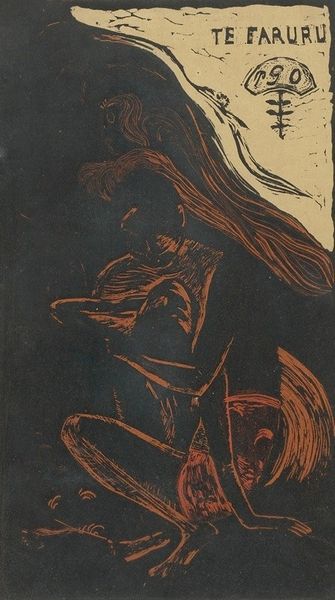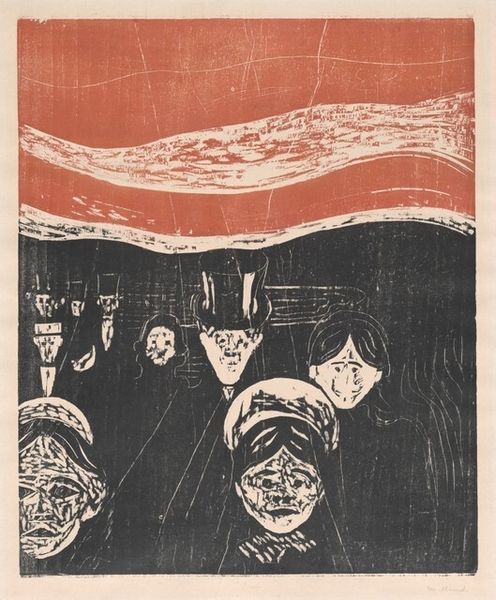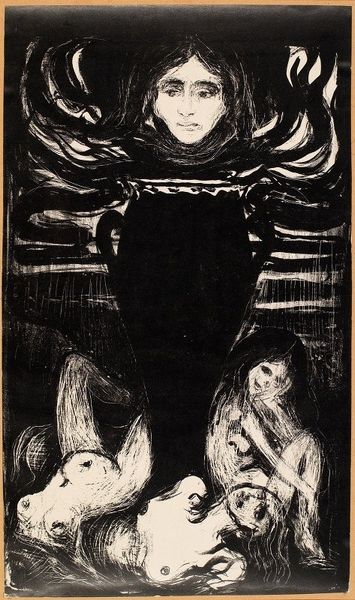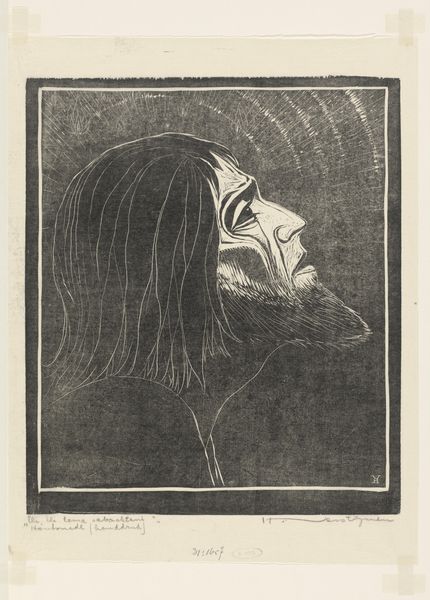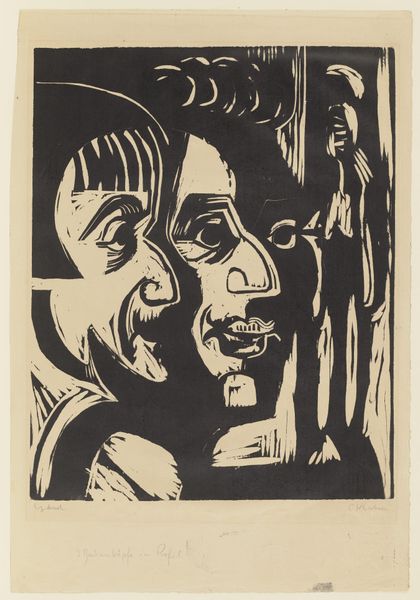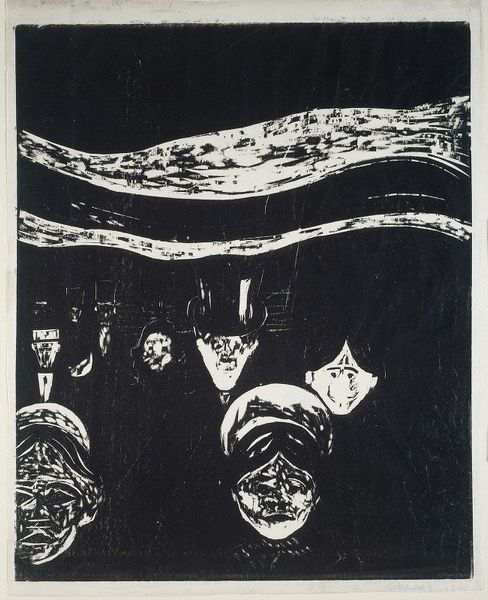
drawing, print, ink, woodcut
#
portrait
#
drawing
# print
#
caricature
#
ink
#
expressionism
#
woodcut
#
symbolism
#
portrait drawing
Dimensions: sheet: 55.9 × 38.8 cm (22 × 15 1/4 in.)
Copyright: National Gallery of Art: CC0 1.0
Curator: This evocative image is titled "Man's Head in Woman's Hair," a woodcut and ink print made in 1896 by Edvard Munch. What's your immediate take? Editor: It feels incredibly claustrophobic. The man's face seems trapped, almost suffocated by the woman's flowing hair. It's a powerful image of entrapment, really striking. Curator: Munch was deeply interested in exploring the complexities of relationships, particularly the dynamic between men and women. This print seems to visualize a kind of psychological imprisonment. The use of woodcut lends it a starkness that intensifies that feeling. Editor: Absolutely. The harsh lines, especially around the faces, they amplify the sense of unease. It's like the anxiety is etched directly onto the characters themselves. And the colors--that almost lurid red of the hair against the man’s pale face… it's deliberately unsettling. Curator: Munch often employed symbolic colors and motifs. Here, the woman's hair, usually associated with beauty and freedom, becomes an oppressive force. There is speculation on whether it’s linked to the figures within his personal life during the time, too. The theater owner, Eva Mudocci, for one. The historical context, that’s just my area! Editor: Which makes perfect sense; this feels more like a psychological state than an actual portrait. And I’m more focused on the textures, the rawness of the medium which suits the message. Like it was violently expressed. The carving almost seems furious. It's deeply personal, raw emotion, and like seeing straight to the bones of his fears around this woman. Or just women in general. Curator: Right, it transcends a literal representation. He masterfully exploits the woodcut medium, doesn't he? He isn't striving for realism. And it resonates far beyond one specific relationship. Editor: Agreed. Even now, more than a century later, the feeling is incredibly resonant. That suffocating sense of being consumed by another person… it's a universal fear. Curator: Exactly, and it illustrates how one artwork can encompass an incredibly detailed study of both individuals within the work, and societal influences that contribute to the very expression. Editor: Thanks, it’s amazing how you make me see it beyond just the emotional context to the wider picture! It’s like that connection you highlight adds another layer of nuance, and adds strength to the print’s impact.
Comments
No comments
Be the first to comment and join the conversation on the ultimate creative platform.
